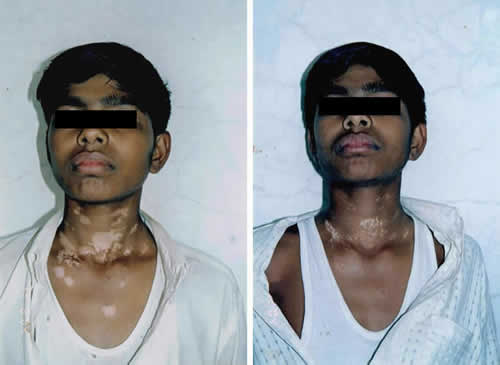Chalazion
A Chalazion is in general a painless, gradually enlarging nodule on the eyelid formed by inflammation of the meibomian glands. It is essentially a chronic granulomatous improvement of the meibomian glands of the eye-lid.
The meibomian glands in the eyelid serve up the function of lubricating the margins of the eyelids, by producing a layer of tear.
Due to acute or subacute inflammation of the eyelid, which might be because of a stye, there occurs a barrier of the duct of the meibomian gland, leading to maintenance of the tears and swelling of the lid.
In most cases Chalazion may appear after a stye. Chalazion is essentially a benign enlargement and not cancerous in nature.
Disease progression of a Chalazion leads to a painless granulomatous that may be mutilating cosmetically.
Causes
With a diagnosis of Chalazion it is significant to consider whether there is a fundamental condition causing the Chalazion.
There are other medical conditions that can possibly cause Chalazion. A Chalazion is typically secondary to some local inflammation or local infection such as a stye. It might be due to a residual aggregation of inflammatory cells subsequent an eyelid infection for example hordeola and preseptal cellulitis, or might develop from the retention of meibomian gland secretions.
Cases of recurring chalazia are often due to chronic blepharitis or poor lid hygiene.
Symptoms
Patients will present with one or many focal, hard, painless nodules in the upper or lower eyelid. They may report some bulge over time, and there may be a history of a painful lid infection previous to the Chalazion development, but this isn't always the case. Chalazia are often recurrent, especially in cases of poor lid hygiene or concurrent blepharitis.
The size of the Chalazion may vary from a tiny grain to a peanut size. The chronic Chalazion tends to give a hard feel because of indurations of the tissues. It may produce some pressure effects on the eye-lid. Sensitivity to light and increased tearing may be noted in some cases. Chalazia are more common in adults than in children.
Homeopathy can do it
Using homeopathic medicines we have been able to treat with success Chalazion as well the underlying tendency, in many patients. We have documented cases from many parts of the world.
The Root Cause of Autoimmune Disease
It is our mission to provide each patient the best care in a kind, honest and compassionate manner.”











